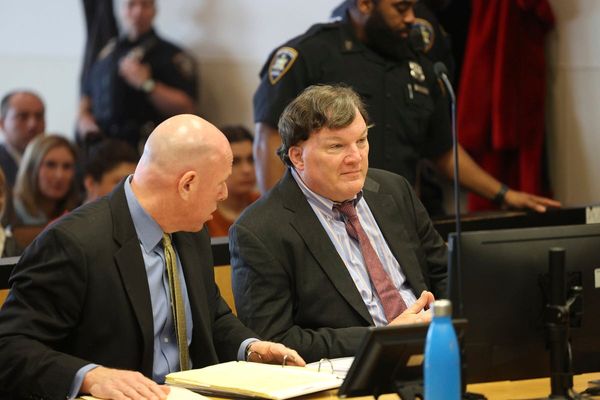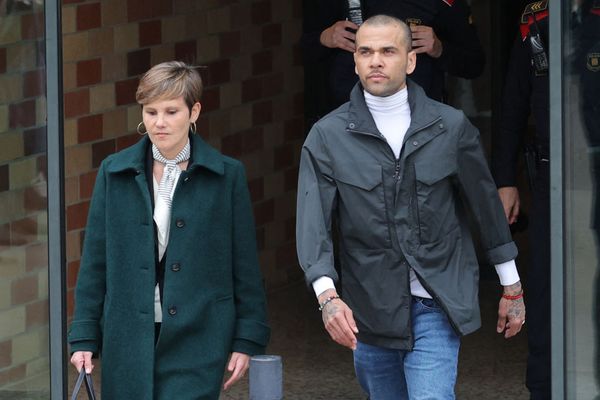As the second wife of England's King Henry VIII walked towards her executioner, witnesses say she was the most beautiful she'd ever looked.
Wearing a grey damask robe with a hood, the slight, dark haired beauty took what were to be her final steps and soon, her final breath.
It was 483 years ago this month that Anne Boleyn had been accused by her husband of conspiracy against the King, incest and adultery. At her trial, just a week before the execution, she was found guilty and sentenced to death.
Many historians believe the charges against her were entirely fabricated, because the King wanted her dead. With Boleyn out of the way, the King would have the freedom to marry the latest object of his lust; the woman who would become his third wife, Jane Seymour.
So what was Anne's biggest crime?
Since she'd been crowned Queen in 1533, Boleyn had failed to produce a male heir — something that was unacceptable if one was married to the King. So now he had high hopes Jane Seymour would be a better "breeding horse" for him and give him the son he desperately wanted.
Before Anne Boleyn was Queen
Anne Boleyn had been a maid of honour to King Henry's first wife, Catherine of Aragon, to whom he was married from 1509 to 1533. But the King, who was known for his wandering eye, fell in love with Boleyn and wanted her to be his mistress. But that wasn't good enough for Boleyn. She refused to join the line of other mistresses who had been used and tossed aside. Instead, Boleyn made it clear she preferred to wait until she was his Queen.
With dark hair, an olive complexion and a long, slender neck, Boleyn wasn't said to be a classic beauty but, still, she managed to captivate the King.
Highly intelligent, she was seen as superior to the other maids of honour in Henry VIII's court because she was educated, as well as being a highly skilled dancer and singer, both important attributes for a potential bride. She'd also been raised in an aristocratic family and spent years serving other European royals.
Due to her education, Anne's duties included greeting foreign dignitaries which meant she had a certain amount of influence on some international issues. In that role she mingled with politicians such as Thomas Cromwell, who in 1532 became the King's chief minister.
/arc-anglerfish-syd-prod-nzme.s3.amazonaws.com/public/GLB3H26DFBB2DDRDUSKJTA7Y3I.jpg)
The beginning of the Church of England
The only way Henry VIII could possibly marry Anne was to end his marriage to Catherine. That was easier said than done because, under the Catholic Church, divorce was out of the question. But that didn't stop the King from trying.
His first attempts involved trying to persuade Pope Clement VII that his marriage should be annulled because Catherine was formerly married to his late brother, Arthur. Henry VIII used a biblical quote from Leviticus, condemning marriage between a man and his brother's wife. Henry reasoned that the marriage was wrong to begin with and so it should be immediately annulled.
The Pope disagreed and refused to annul the marriage. Little did he know what turmoil his refusal would cause. In a risky move that was partly engineered by Cromwell, Henry broke away from the Catholic Church forever. He declared that the church should have no power over England's sovereignty and he secretly married Anne in January 1533.
In doing so, both he and Thomas Cranmer, the Archbishop of Canterbury, were excommunicated from the Catholic Church.
This led to the creation of the Church of England, headed by King Henry. It was a giant step in the Reformation that saw England become one of many Protestant nations. It was a move that angered many Britons who saw Boleyn as playing a role in the change because she was a supporter of England's Protestant reformers even before the Church's steadfast opposition turned her against it.
/arc-anglerfish-syd-prod-nzme.s3.amazonaws.com/public/J6K6DZ5XLJHWFBZPXHVBSNQBYU.jpg)
A daughter is born
In 1533, Anne gave birth to her first child — a daughter named Elizabeth — who would one day be crowned Queen Elizabeth I. This was a shocking disappointment for the King, as a woman had never ruled successfully before. In those days it was out of the question that a woman could have any kind of domination over men.
The King's dream of having a son quickly vanished as Anne suffered several miscarriages. She eventually gave birth to a child, believed to be a son, in January 1536, but he was stillborn.
Meanwhile Henry was busy having affairs with two of his wife's maids-of-honour, Jane Seymour and Madge Shelton. Yet it was Seymour that truly captured the King's attention.
/arc-anglerfish-syd-prod-nzme.s3.amazonaws.com/public/3MSZBRZW6JCOJDWAMEELDCGCGI.jpg)
Anne Boleyn's downfall
Elsewhere in the palace, Boleyn and Cromwell were having disagreements on issues of finances and foreign policy. Some historians believe Cromwell was following the King's orders in trying to set up charges against her. What's not disputed is that Cromwell was part of a secret group that was investigating any wrongdoing of Anne's.
Interestingly Anne's own father was in this secret group but some historians believe he might have just been trying to warn her that the King was trying to get rid of her.
Either way, Boleyn was powerless.
Once she was accused of having affairs with the men in her court (some were said to have been tortured into making confessions) there was nothing she could do to save herself. She was also accused of sleeping with her brother and also using witchcraft to "bewitch" the King.
According to historians, once Boleyn was officially charged on May 7, she was sent to the Tower of London to await her trial on May 15, 1536.
The jury that found her guilty included a former fiance as well as her uncle. Henry showed some mercy to his Queen, allowing her to be executed by a skilled French swordsman, the "hangman of Calais". Having your head removed by a sword was much less horrendous than an axe, due to the latter often taking multiple strikes before the head falls off.
The beheading
As the crowd gathered around Tower Green, 29 year-old Anne Boleyn calmly accepted her fate.
Around 9am, Boleyn was escorted through the courtyard of the Tower by four devoted servants who moved in a "grim procession" towards the scaffold. Sobbing, the ladies watched as their Queen slowly climbed the steps. The Tower gates were kept open so members of the public could watch; about one thousand people came to watch her die.
As Boleyn stood at the scaffold, a Portuguese witness later wrote that a "great murmur rose from the crowd" and "never had the Queen looked so beautiful".
The scaffold was covered in black cloth and straw but there was no block for the execution as Boleyn was to be executed by a skilled swordsman, which meant she only need to kneel for the strike.
Her final wish was to address those that had come to see her last living moments.
There are various eyewitness accounts describing what Boleyn actually said. In fact there are so many conflicting reports about exactly what happened on the execution morning, depending on whether the eyewitness was for or against the Queen.
But this is the most accepted version of Boleyn's speech according to Edward Hall, a member of parliament:
Good Christian people, I am come hither to die, according to law, for by the law I am judged to die, and therefore I will speak nothing against it. I come here only to die, and thus to yield myself humbly to the will of the King, my lord. And if in my life, I did ever offend the King's Grace, surely with my death I do now atone. I come hither to accuse no man, nor to speak anything of what whereof I am accused, as I know full well that aught I say in my defence doth not appertain to you. I pray and beseech you all, good friends, to pray for the life of the King, my sovereign lord and yours, who is one of the best princes on the face of the earth, who has always treated me so well that better could not be, wherefore I submit to death with good will, humbly asking pardon of all the world. If any person will meddle with my cause, I require them to judge the best. Thus I take leave of the world, and of you, and I heartily desire you all to pray for me. Oh Lord, have mercy on me! To God I commend my soul!
One witness claimed "the silence was deafening".
Another witness claimed Boleyn was "praying loudly and breathing loudly", as the crowd waited for the sword to strike.
Boleyn turned to her distraught servants, thanked them for their service and asked them to pray for her soul. It's claimed she also forgave the swordsman and handed him a sack of coins as his payment, asking that it be given to the poor.
Then, she was told to kneel and say her final prayers.
Death came quickly; the executioner unsheathed his sword, the steel met the Queen's neck, decapitating her in one strike, and her head fell onto the straw.
The moment her head fell, it was covered by a white sheet and the cannons along the Tower Wharf fired to signal her death to the world — and to the King who wasn't present for his wife's death.
Usually, it's customary for the executioner to hold up the person's head and say, "So perish all the King's enemies!" But there's no recording of this occurring at Boleyn's execution.
Lancelot de Carle, secretary to the French ambassador, wrote that Boleyn "went to the place of execution with an untroubled countenance. Her face and complexion never were so beautiful. She gracefully addressed the people from the scaffold with a voice somewhat overcome by weakness, but which gathered strength as she went on."
Free at last, King Henry married Jane Seymour just ten days after the execution of Boleyn. And, while Queen Jane gave her husband his long-awaited son, who became King Edward VI at the age of nine — it was his daughter with Boleyn who went on to become the most celebrated Tudor monarch of all: Queen Elizabeth I.
LJ Charleston is a freelance historical journalist.







